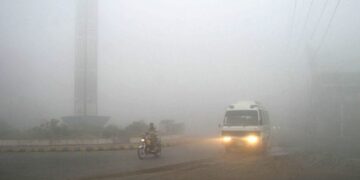![]() Follow Us on Google News
Follow Us on Google News
Pakistan is currently facing a severe water shortage, with Punjab and Sindh topping the list.
According to experts, March was the hottest month in Pakistan in the last six decades, after which it was expected that the melting of glaciers in the northern areas due to the heat would increase the amount of water in the rivers, but this did not happen. Water scarcity in the country’s rivers has further increased.
What is the demand for water in both provinces?
According to the report of IRSA, the demand of Punjab is one hundred and five thousand five hundred cubic feet per second (cusec), but Punjab got almost half of it ie only 51,400 cusecs of water were supplied while the demand of Sindh is 67,100 cusecs, but Sindh 32,600 cusecs of water were provided.
Why water scarcity has become a permanent cause?
Experts say that for the last four or five years, Pakistan has been experiencing water scarcity in the month of April for a number of reasons, such as low rainfall and unbalanced temperature due to climate change.
According to experts, record temperatures were observed in March this year, but in the northern areas, where there are glaciers, the temperature is not balanced and the glaciers are not melting and the water in the river is not flowing. The temperature in Skardu is 25 degrees Celsius on one day, 18 on the second day, and 12 on the third day.
According to experts, the sad thing is that now there is no place to store water in Pakistan, all the dams in Pakistan are filled with river salt or mud. These dams no longer have the capacity to store water, which is another major reason.
Why is Sindh facing the biggest water shortage?
Farmers in Sindh province have claimed that the province has been facing the worst water shortage in the country for the last few years.
Mahmood Nawaz, leader of the Sindh Farmers Association, said in an interview that it takes three days for the water to reach Guddu Barrage, four days to reach Sukkur Barrage, and six to seven days to reach Kotri Barrage. And when this water is released into the canals, it takes ten days to reach the fields. When water is given to the crops, the scarcity starts from behind.
He further said that canals in Sindh are reopened for one week after being closed for 15 days. At present Sindh officially has 51 percent water shortage but Sindh has 70 percent loss.
He said that cultivation of all crops in the whole of Pakistan starts in Sindh first and the crop also ripens in Sindh first. The water shortage in the whole country has started in April, but the water shortage in Sindh has already started before March 15. Later, according to experts, the main reason for water scarcity is record heat and not storing water at the right time.
Water scarcity in Sindh could weaken the country’s economy
Sindh Information Minister Sharjeel Memon has said that Sindh is facing a severe shortage of water, the federal government should take notice of this issue, Sindh has an important role in the country’s agricultural economy, and the country’s economy is already facing challenges and lack of water will further aggravate the economy, water scarcity is affecting agricultural production and orchards, farmers and cultivators are worried, the cost of crops is not being met.
Sharjeel Memon said that water supply to Sindh should be ensured under the 1991 agreement, due to the shortage of water reserves in the country, the shortage should be distributed among the provinces under the water formula.
What is the solution to the problem?
Experts say that water should be released in the country’s dams with proper strategy as no strategy is formulated which is why all the dams become empty when the time comes. According to experts, if immediate steps are not taken now, the water problem in the country could become even more serious.































